biology

Trans*Plant: May the Chlorophyll be with/in you
Quimera Rosa (ES/AR/FR)
March 2016: Start of Trans*Plant project, which engages in human>plant hybridizations. December 2017: First chlorophyll IV injection @ Kapelica Gallery. March 2036: The annual Earth resources are exhausted > global Internet final shutdown. December 2037: A bio-hacker community connects a VPN to Mycorrhiza network. This mixed-media installation aims to present the work behind Trans*Plant, as well as produce a speculative fiction. A piece where leftovers from the past and the future get entangled.

Expert Tour: Prix Ars Electronica: Life’s intelligence, beyond human cognition
Jens Hauser (DE/FR/DK)
Prix Ars Electronica’s new category “Artificial Intelligence & Life Art” sparks discussions about the links between the largely ambiguous notions of “intelligence” and “aliveness.” Jury member, curator, and media theoretician Jens Hauser will reveal the criteria of the jury process and present selected positions out of the 15 award-winning art works.
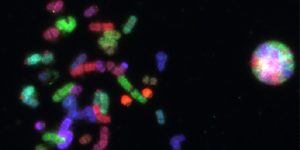
In Posse
Charlotte Jarvis (UK)
In Posse is an attempt to make the world’s first “female” semen using the artist’s own stem cells and material donated by multiple women, trans and gender-non-binary people. *In Posse* seeks to use science and art to undermine traditional notions of patriarchal power and to examine the meaning of gender now and in the future.
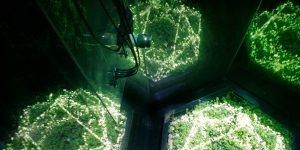
Meditative Symbiosis
Jean Danton Laffert (CL), Karin Astudillo (CL), Camilo Gouet (CL)
Meditative Symbiosis is a trans-disciplinary project that explores the interdependence of a living organism and an electronic system. Composed of containers with plants and sensors inside, a cycle of mutual dependence is created between the growing process of the plants and the dynamic adaptation of the system, the sum of which generates an evolutionary, bio-electronic aesthetic.
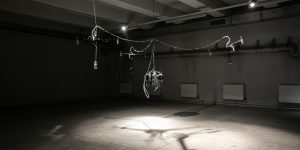
Poise→[d]
Dmitry Morozov / ::vtol:: (RU)
Poise→[d] is a hybrid installation that uses chemical and physical reactions to control its behavior and sound synthesis. The installation consists of the main control unit and three balancing robots. The main control unit has three core systems where the reactions occur, with everything analyzed by a computer algorithm using cameras.
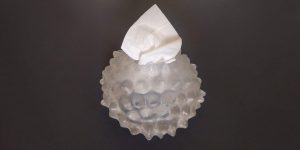
Probing the Planthroposcene: Excerpts from a Dis-service Society
Alexandra Toland (US/DE)
Can “ecosystem services” and disservices provided by plants be seen as phyto-technologies of multi-species societies? How are spaces of creative dissonance, resilience, and resistance created by outliers: pests, parasites, invasive species, and allergens? What moral agency do humans have in determining the assets and liabilities of plants during the environmental strains of the Anthropocene? These questions are explored through an assemblage of objects, images, and recordings featuring plants as protagonists in natural habitats along roadsides, probing what Natasha Myers (2016) has dubbed the “Planthroposcene.”
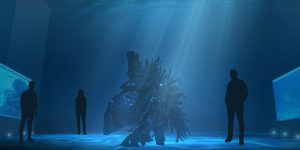
Triaina: Model A
TOHOKUSHINSHA FILM CORPORATION x AnotherFarm (JP)
Triaina is an ongoing large-scale art project that utilizes design and technology to create sustainable ecosystems that integrate man-made forms with nature. A sculpture made from concrete and α-amino acids is placed on the seabed and acts as a cultural artifact as well as a home to marine life, promoting an ecosystem that is a symbiosis between man and nature.
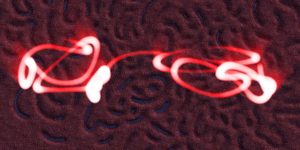
nimiia cétiï
Jenna Sutela (FI)
The project uses an AI as a medium to channel messages from Bacillus subtilis nattō, an extremophilic, probiotic bacterium and a possible Martian.
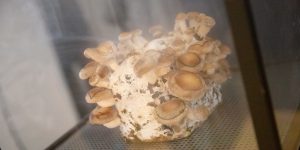
Growing Geometries – tattooing mushrooms
Theresa Schubert (DE)
Growing Geometries – tattooing mushrooms explores the morphology of fungi and evolution of geometrical shapes on living and growing membranes.
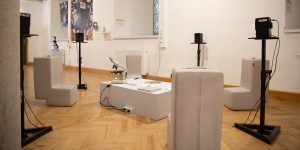
TARDIGRADA – von mikrobiotischen Lebenskünstlern
Maria Antonia Schmidt (DE)
The tardigrade or water bear, a microorganism, survives environmental conditions that hardly any other living creature can withstand. While researchers are working on deciphering the secrets of the tardigrade's survival, the media are throwing themselves at the cute bear and marketing it in all conceivable variations. In the end, the work poses the question of what sound these tiny creatures make. This is reason enough for the world's first tardigrade nano-ear experiment: a musical radio feature/4channel audio installation between science and absurdity.


